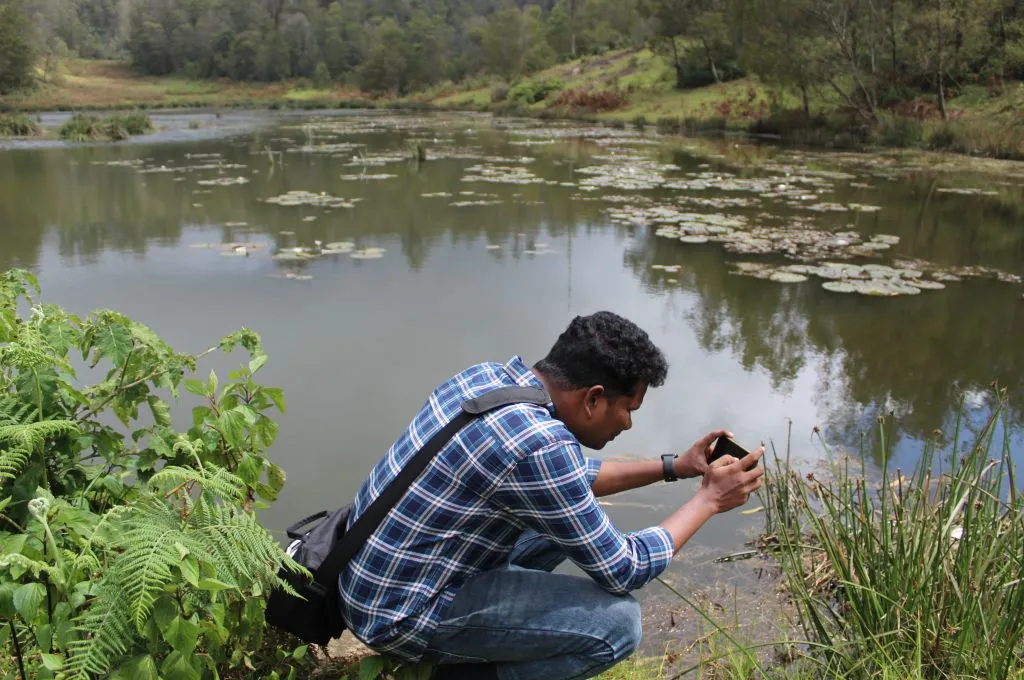It is but natural that companies focus on their own business growth, it is their very nature of existence. However, the times that we live in strongly demand that companies also invest in the growth of the nation and the advancement of its people. Today, India is seeing significant growth as a result of the profits, employment opportunities, and market created by companies. But, it is also these companies and their business activities that have a detrimental impact on their surroundings.
Take, for example, manufacturing companies. Building factories usually entails taking people’s land, which in many cases is agricultural. Even if companies are in complete compliance with the law and pay the right compensation (which in many cases could be above market price), their factories will never create the number and the quality of jobs that could compensate for the loss of livelihoods from taking their land.
If we look at urban-focused service companies, there is often no direct visible impact on their surroundings. But there is a latent environmental impact in terms of congestion and pressure on city infrastructure; which needs to be accounted for.
Corporate Social Responsibility (CSR) is therefore critical for business sustainability in a country like ours. It enables companies to look beyond profits, and invest in the communities of which they are a part.
Over my years of working in this space, I have learned a few lessons on how to make corporate giving more effective.

Photo Courtesy: Ambuja Cements Foundation
1. Think beyond a year; make it count
Section 135 of the Companies Act 2013 encourages corporates to play a role in India’s development story. It provides an opportunity for corporates to make profits while also distributing that profit in the interest of stakeholder prosperity. And this can only be done well if there’s a strategy in place within companies.
To start with, companies must make a minimum commitment of three to five years to the CSR projects they support. It’s understandable that a company’s CSR budget is determined by the level of profits, but that shouldn’t be an excuse to support short-term projects or withdraw funding once a project has been started. When we are seeking development and growth of communities and regions that have been underserved and underdeveloped for many decades, we have to be patient and have at least a three to five year horizon, if not more.
2. Plan for the unexpected when working with the government
Oftentimes, while a corporate might envision an implementation plan for its CSR, and it may be based on a need analysis as well as a participatory appraisal, the situation on the ground might change. For instance, the local government in the area can demand for the same earmarked CSR funds to be redirected to help meet their immediate infrastructure needs such as building drainages, education institutions etc. This then forces corporates to give precedence to government demands, rather than respond to community needs, and it can defeat the purpose of prioritising community and long term development
Implementing CSR according to requests from local governments, and using the funds to meet targets for national programmes like Swachh Bharat, fragments the intended outcome of the mandate.
3. Measure and communicate impact
The virtue of corporate DNA is that we look at the returns investments bring to business. It’s therefore natural for senior management and boards to ask for returns on their CSR investments. For them, it’s not convincing to only look at the number of people reached or the geographic outreach. They want to know the social change that has taken place as a result of the investment.
For example, six years ago, Ambuja Cements decided that we would be a water positive company–that we would plough back at least twice as much water into the system as we used up. But to be able to know whether we were achieving it, it was important to measure it. So, we created tools to measure our consumption patterns and harvesting initiatives.
With the help of KPMG we developed a tool called True Value, which is in essence a P&L statement of sustainability, just like an accounting P&L statement. It consolidates our pluses and minuses on the environment and social front, which then get compiled to give us a triple bottom line measure that is a reflection of our company’s sustainability.
We’ve also calculated the SROI for projects, which has required a significant investment of time and money. When we applied the SROI model to our Water Resource Management programme at Kodinar, Gujarat, which is our oldest and in one of our largest locations, it threw up a 13.5X number. This convinced the board that the project had been worth the effort and money, and, its impact, more than merely transactional in nature.
SROI is a relatively new concept in India in terms of people applying it to their projects. Financial accounting took many decades to get refined and reach the globally accepted standards that we take for granted today. We need to accordingly create a robust SROI measurement system, by using it, critiquing it and giving appropriate feedback, so we can strengthen the measure.

Photo courtesy: Ambuja Cements Foundation
4. Don’t only innovate, replicate as well
There is more value to ‘cutting-copying-pasting’ than we give it. For example, if someone has a good model on improving learning outcomes for girls, there is no point in wasting resources trying to find new ways of doing this in a different geography. (While context matters, the core model can stay the same, if it is found to be effective.) The sensible thing to do is to have the model developers build your capacity, so that you can start their model in your area. Just cut-copy-paste; everyone doesn’t need to invent their own wheel.
ACF’s work in Chandrapur is a good example of this. We have a flagship project on healthcare which began in 2005–much before ASHA workers were introduced by the government. The programme trained women at the grassroots (known as Sakhis) to become healthcare providers in the community. It started in Chandrapur and then expanded to five or six other locations. And this expansion happened because we saw a project exactly like this, done by FRCH (Foundation for Research in Community Health) in Pune.
FRCH has a history of implementing models for healthcare delivery. In contrast, we at ACF, were not experts in this area. They helped us by doing everything in the first year, from selecting Sakhis to training them, to training our foundation staff. For the last 13 years , we have been running the project ourselves. All we did was copy their model and have them train us how to execute it properly.
It’s a matter of learning from one another, of acknowledging somebody else’s expertise, and sincerely seeking and implementing their models; and similarly, offering to share your expertise with them as well, whenever needed.
5. Partner with fellow corporates
There isn’t much happening on the corporate-corporate partnership front, despite the potential for a great upside.
For instance, many of the small and mid-sized companies may not have the appetite or the ability to invest in specialised development-focused professionals within their companies; their CSR budgets might also be small – INR 20-30 lakh a year. However, ensuring that their support creates impact on the ground might still matter to them. Given this, a good option for them might be to piggy back on initiatives of larger companies that have the people, expertise, and wherewithal to run, monitor, and measure programmes at scale. And since this qualifies as CSR under the law, it’s a win-win for both parties.
There’s also potential to trade expertise between corporates. Today, for instance, one of the big challenges for nonprofits as well as implementing foundations like ours is not being able to use technology to scale. It would make sense for us to talk to IT companies and leverage their technical skills.
There are enough synergies between corporates; the problem however is that while there is much conversation around this, there is still a long way to go to put it into practice.
6. Partner with the development sector
Very few companies in India truly understand the development sector, and implement programmes at scale and on time. This is because social development is not their realm of expertise.
This expertise can either be created by roping in development sector professionals or by funding established experts in the sector, nonprofits, and implementing foundations.
The CSR mandate is a great opportunity for the private and development sector; but opportunities will turn out to be what we make of them.
—
At the AVPN Annual Conference 2018, Pearl Tiwari spoke about impactful CSR, and the importance of looking at it as an opportunity for shared value creation.





